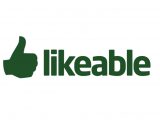Creating BIG
RESULTS for ALL
BUSINESSES
Corporate CRM and Low-Code CRM
A company that had been using Maximizer CRM for over 10 years decided to move to a heavyweight CRM platform designed for programmed-process customisation like the original Siebel CRM systems. After 4 years they came back to Maximizer CRM. Their experience is a lesson for all involved in relationship work/sales. Sometimes a corporate CRM solution, even a market leader, cannot deliver the sales enabling benefits.
The company is in the business of supplying high-end servers and screens to thousands of customers, and they run large e-mail campaigns to support a tele-sales team of 10. They began their big-brand CRM implementation with a review of business processes. There was considerable customisation work done to accommodate their improved ways of working. When sales staff were shown how they would use the system, they were initially critical of the multiple-screen way of working, complaining there were ‘Too many mouse clicks’. In the early months after the go-live, there was a need to re-design some of the screens. For a time their sales levels were acceptable and the system seemed to be doing what was required. User complaints were seen as ‘bedding-in’.
The company was very successful in the banking sector. When the commercial environment became more uncertain, there was a significant downturn in trade; their spending on IT equipment was cut. The business was struggling to maintain revenues at budgeted levels and the sales team was under pressure to step up their efforts (daily call rates). Gradually, trading conditions got really tough. Sales levels were just ‘adequate’ but below target. The business needed more, so staff were again put under pressure to make more calls. There was some complaining about the system being slow, so as they were an IT hardware supplier they put the CRM application on a top-end server. The complaints subsided a little and the daily call rate went up. Staff began to complain that they had not found it difficult to make high call rate targets with Maximizer, but the new system was holding them back. Management had the screens modified in an attempt to work more like Maximizer. It failed.
As banking revenue dried-up, management told sales staff to look through the records of old customers who had not bought or who might be encouraged to buy more. Management discovered that this was impossible because the customer profiles in the system had not been properly maintained. Sales staff informed management that in order to make the call rate required of them and get the business in, they had stopped putting the notes into the customer record. As a result, the team was unable to search, group and target campaigns as they had done in the past with Maximizer. This was a very serious problem.
In their defense, staff argued that the system was too slow, (perhaps time-consuming would be a more accurate description) and they had no option but to drop the updating of customer information in order to make call targets. Management reviewed the sales processes they were using and concluded that the ‘slowness’ was only partly an IT issue; it was more a matter of the design of the user interface. There were too many screens and mouse-clicks. The CRM activity overhead on every call took too much time. What they had been able to do in Maximizer 18 months before was not possible with the programmed-process type of CRM. They contacted JI Group and moved back to Maximizer CRM.
What can we learn from this experience? First of all it seems that that corporate CRM systems offer user interface processes as a series of forms. This has an advantage of sorts in that it constrains users to follow process. This might be right and economic for large teams but is an unacceptable overhead for smaller organisations. Maximizer’s user interface, however works differently; it’s more flexible, it comes set-up with standard processes that are normal for millions of office workers around the world. It’s an immediate and responsive minimum-clicks working environment. Heavyweight CRM systems cannot match this.
Things you can do in Maximizer like saving call notes take only a few seconds and a few clicks. Users see it has a toolkit of office tasks which they use as necessary; their work is ‘enabled’ by Maximizer not ‘constrained’ by forms. This helps them to work faster and smarter and get more job satisfaction out of managing their own time, getting the job done and making their targets.




